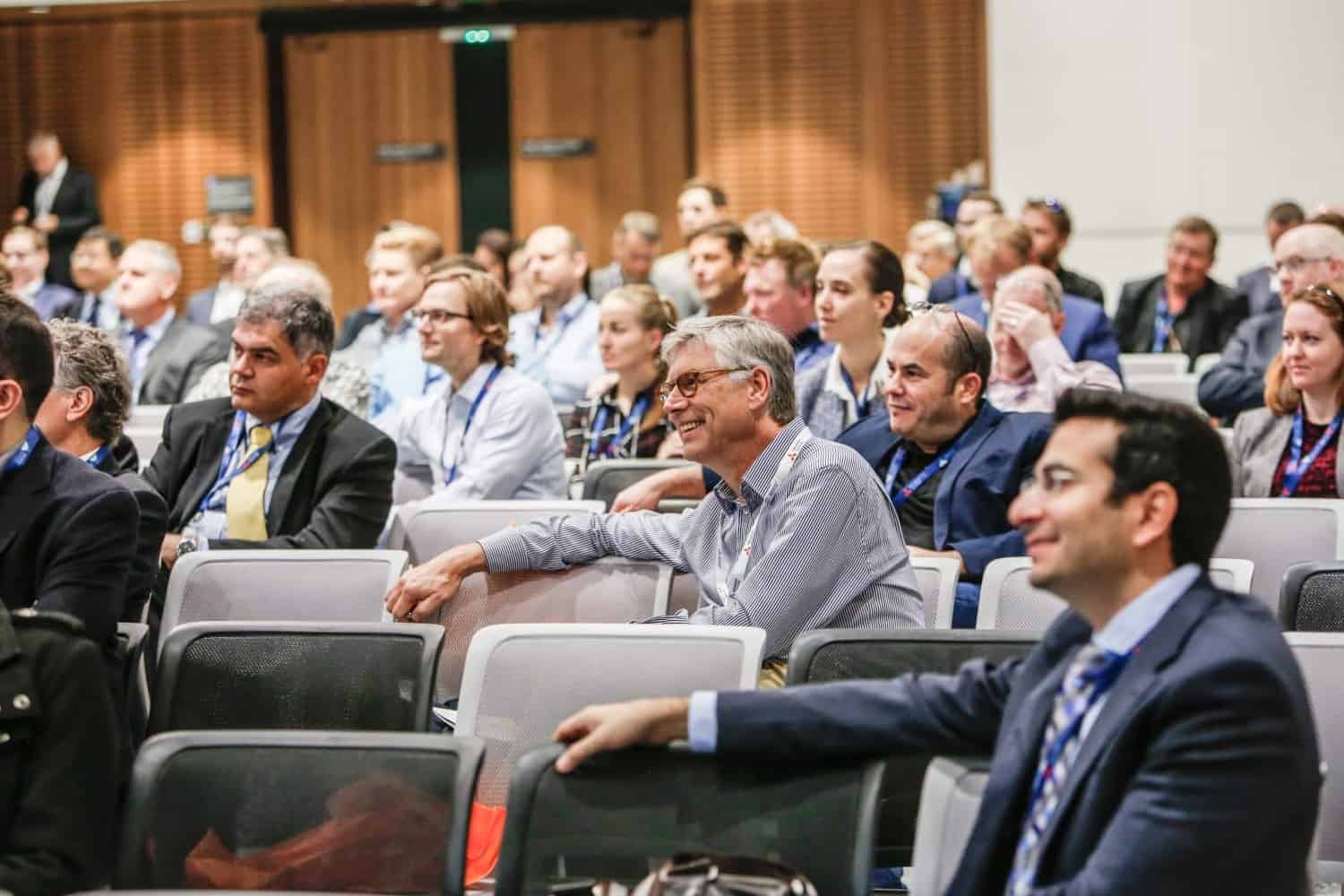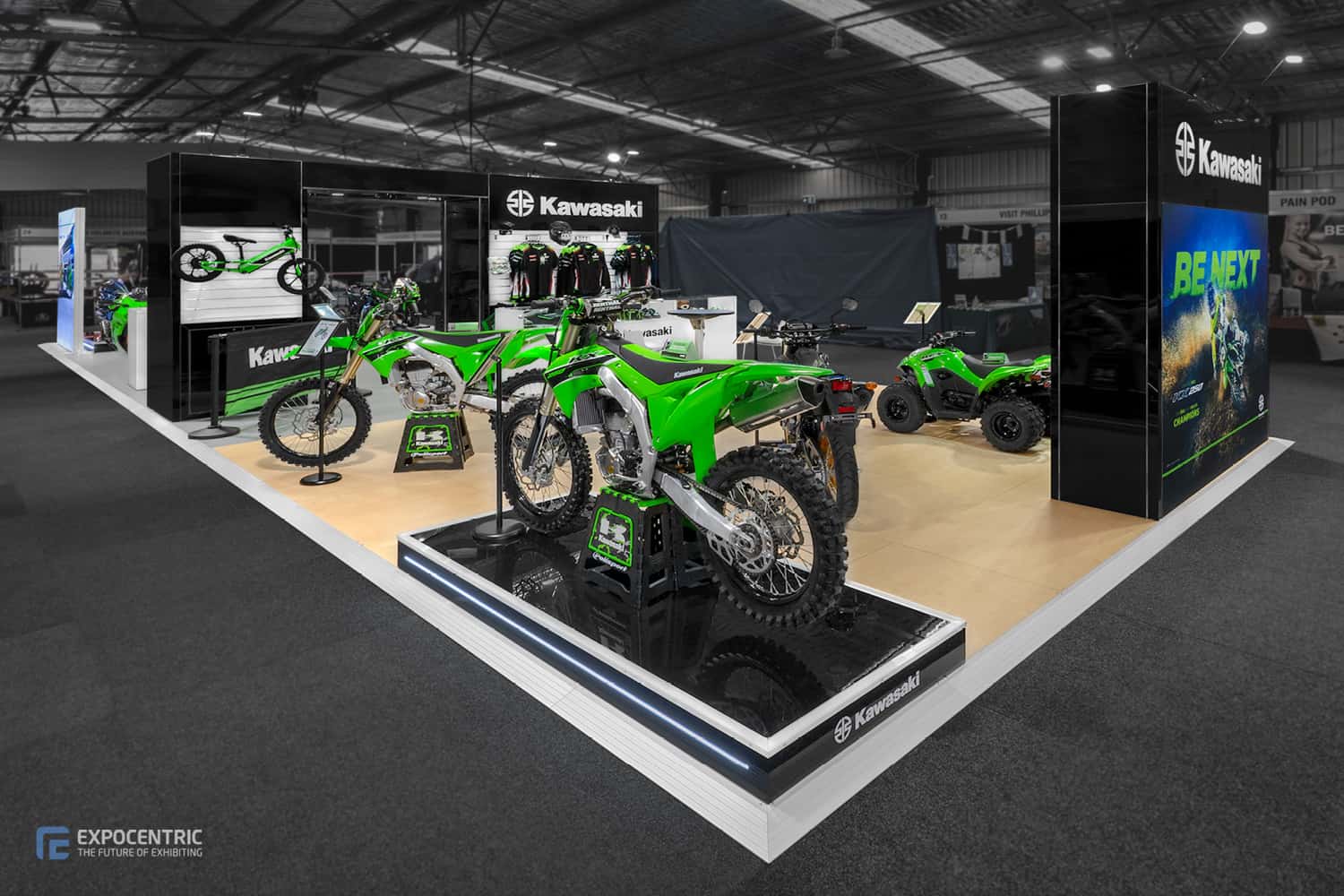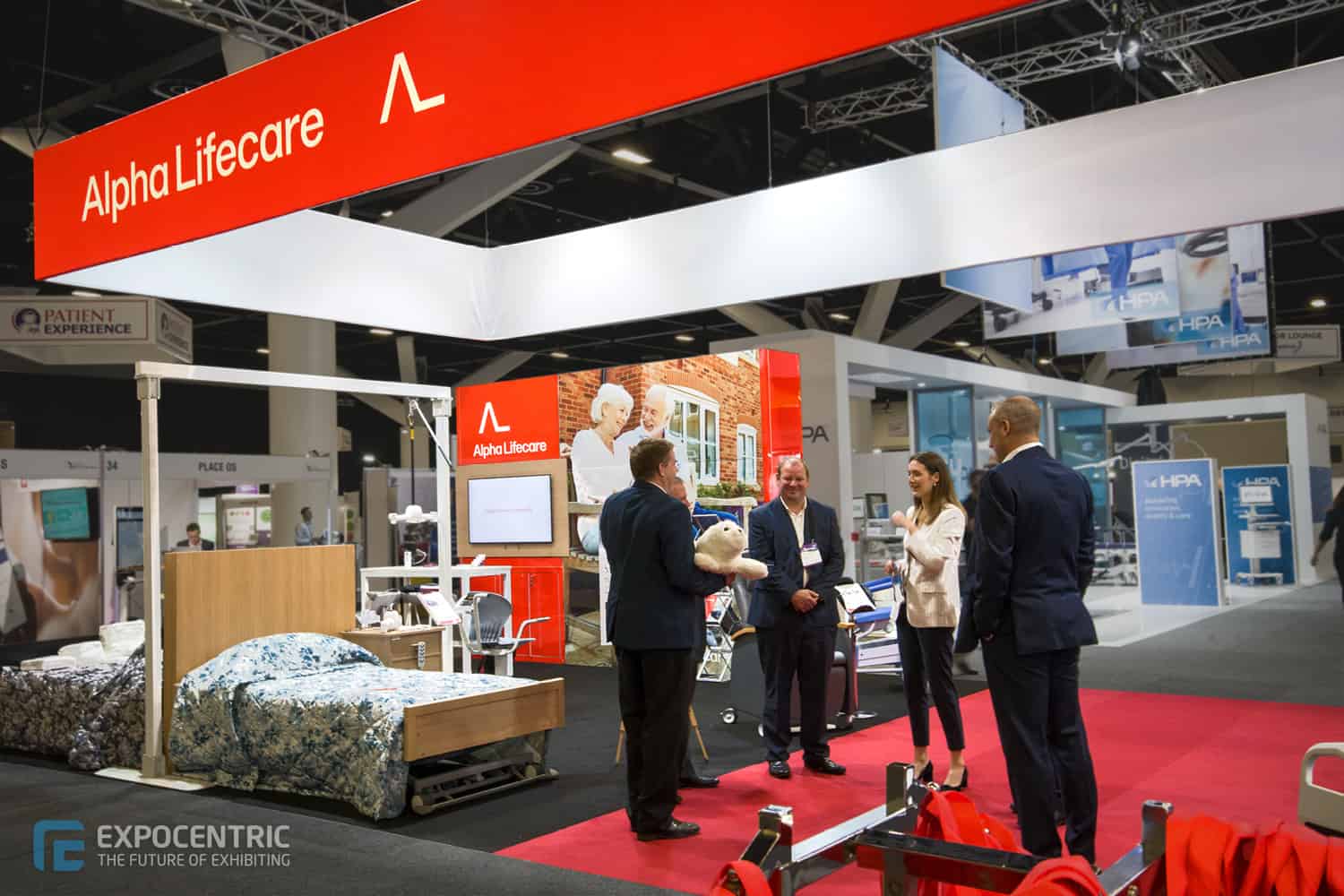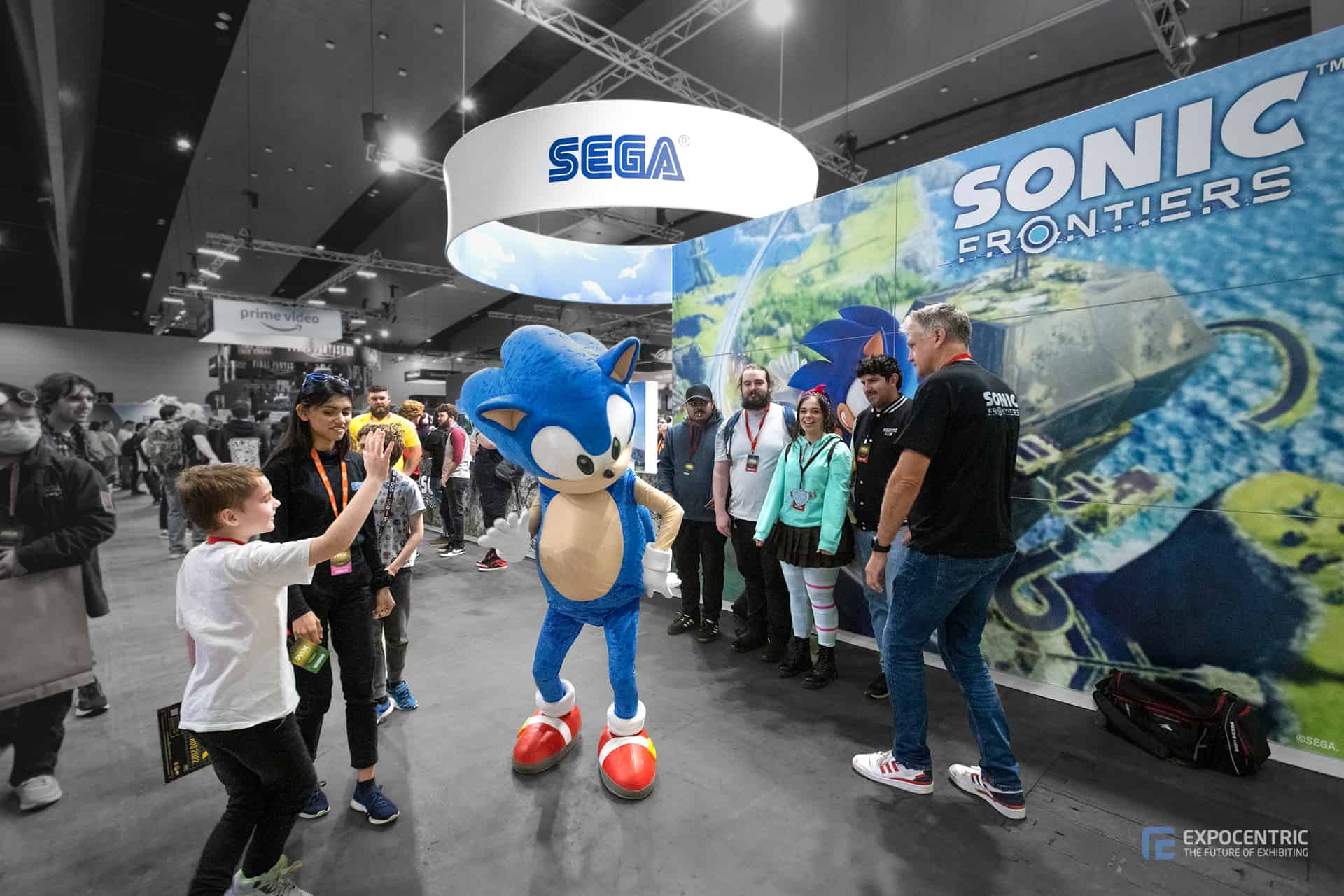Has your company got a conference on the horizon but unsure where to start with planning? With over 12 years of events, Expo Centric has successfully managed a myriad of conferences and knows the perfect planning process to take your event from confirming the conference themes to opening day. They have collated the perfect conference planning checklist to ensure no box is left uncheck and no delegate is missed. Clear your diary, because this is one checklist you’ll want to read, uninterrupted.
What is a Conference and how does it differ from other events?
Conferences are a multi-day event that are typically hosted by an industry organisation to provide an opportunity for industry personnel to connect and learn about information within their sector. A conference schedule usually includes educational day sessions, hearing from experts from within the industry, exhibition halls with key companies from within the industry and social events to support connections.
Unlike other events, conferences are often hosted by industry organisations, rather than event companies, and are structured with a particular format. The following will detail everything your company needs to consider to plan their next conference.
Determine the timeline
Aligned with all event planning, a timeline must be put in place to ensure all future movements are met in a timely manner, and to avoid the inevitable event week pressure.
A conference planning commencement sweet spot starts at the 18 month mark, however should less time be available, the Expo Centric team are well versed in tight timelines and can support within any timeframe.
It is recommended to segment the timeline into 4 month blocks, allowing for road checks to occur after every few months to ensure all planning is on track. Whilst the exact checkpoints will be detailed throughout the upcoming information, the key timeline pieces include:
- 18 – 12 months: Confirming goals, budgets, timelines and large scale event details i.e., dates & locations
- 12 – 6 months: Marketing, registration, programming, sponsorship & exhibition.
- 6 – 0 months: Onsite planning & post conference materials.

Determine the target audience
A successful conference follows a well-considered audience and ensures that the conference planning is tailored to suit the target audience.
Regardless of whether the event is run by an industry organisation, all conference organisers should consider who they would like to target to attend their event. Some considerations that can be made when determining the audience may include:
- Industry
- Position within the industry and whether there are any exclusions from the industry personnel including students, or certain affiliations
- Location of the audience
- Demographics and interests to help support affiliate activities.
Determine the goals and objectives
The objectives and goals for conferences differ from the usual event goals which often center around lead generation and sales. Whilst profitability is key for success, there are a number of other drivers that are taken into consideration for determining the goals and objectives of conference event planners. Some of these considerations include:
- Distribution of relevant industry education
- Industry training and CPD hours
- Sponsorship and Exhibition sales
- Strong attendee numbers
- Inclusion of keynote speakers
Conference goals are typically industry-specific and centered around the distribution of education and training in addition to profitability. Once the objectives have been determined, conference planners can look at confirming metrics that determine the success.
Determine the success metrics
Understanding the success metrics goes beyond the goals and objectives set by the company. Instead, they help determine whether the conference can be considered a success and in turn provide a profitable return on investment. Read more on how to calculate an event’s return on investment in our blog Essential to Metrics to Judge ROI From Your Event. In the instance of conferences, however, there are a number of success metrics a company can consider:
- Number of registrations
- Value of exhibition and sponsorship received
- Number of abstracts received
- Anticipated revenue
As part of the success metrics, companies should also take this time to consider an appropriate budget for their upcoming conference.
Determine the Budget.
The event budget is a large consideration for all conferences and will determine the limitations of the event. There are two types of budget that should be considered as part of the planning process.
Fixed Costs
Fixed costs are the costs that will be incurred regardless of attendance numbers. This type of budgetary consideration can be pre-planned for and includes things like venue, production, AV, and staffing.
Variable Costs
Variable costs are those elements of the budget that will differ pending on the number of attendees. As part of the conference planning process, it is recommended to have a number of budget iterations based on varying numbers of attendees. This way conference planning can be completed accurately without the possibility of not knowing the impact of a varied number of attendees. Variable costs may include catering, social events, marketing, and transportation.
Once the budget has been determined, the conference planning will be in a position to commence the larger details.

Determine the conference theme
Unlike some events, conferences usually have a theme determined by the planning committee that the event schedule, program, and planning will revolve around. This creates an element of unification throughout the event whether it be from presentations or social activities.
The conference theme often looks to tie the industry to a larger social topic the conference will look to discuss.
Determine the Dates, Location & Venue
With the pre-planning complete, the conference planning checklist moves to the overall conference specific details. The first three initial details will work to shape the conference. The date, location, and venue will each work in conjunction with one another as all three must align to be confirmed.
Date
Determining the conference dates will need to take into consideration the industry’s calendar year and work around any key moments for them. For example, the medical industry will likely avoid medical exam periods particularly if they are looking to engage juniors within the industry.
Location
It isn’t uncommon for the location of cyclical conferences to rotate between a number of locations. This works to ensure all members of an industry can have equal access to attend the event. If the location isn’t predetermined, conference planners should consider relevancy to their target audience, ensuring the location is easily accessible by transport and is inexpensive.
Venue
Selecting the right venue will be determined by budget and location. As conferences usually hold a high number of attendees and require a number of rooms, venues usually include convention centers and hotels. Venue availability will also play a role in the selection, particularly if there are multiple events running concurrently.
In order to determine these three key details, each of the dates, locations and venues must align with each other. It will often take negotiation between the venue and event manager to land on a suitable date. Once these details have been confirmed, it is time to move on to planning the conference’s program details.
Determine the Speakers.
Speakers at a conference will equate to the majority of the program planning. With such importance, there are a number of avenues companies can source speakers.

Abstracts & Papers
A large part of conference planning is abstracts and papers. Abstracts and papers are pieces of written research that industry experts submit to a conference organising committee as an application to present at a conference. A robust process takes place for the abstracts to be submitted, graded, amended, and approved. The number of rules and regulations around the submissions of abstracts and papers vary pending on the conference. Following approval, a number of presenters will be appointed.
Invited Speakers
Conference organisers must invite and book speakers in advance in some instances. Invited speakers include those within the industry that do not need to provide an abstract and paper to speak, and rather are invited to speak at the conference to share their perspectives or lived experience. These speakers bring dimension to the program and are an important part of the conference.
Keynote speakers
A keynote speaker is another invited guest for the conference, however, may not be from within the industry. A keynote speaker plays the role of adding value to a conference by detailing their own experience which often allows attendees to gain perspective or relate to the talk. They are often used as a marketing drawcard to encourage further registrations.
Determine the marketing plan
The next item on the planning checklist entails determining the marketing practices that will be used in the lead-up to the conference. Alike the conference plan, the marketing plan will follow a timeline that will run throughout all key distribution methods. The timeline will run from approximately 12 – 18 months out from the conference and messaging will increase in frequency as the event draws near. There are a number of key distribution platforms companies should consider. When considering conference marketing the platforms tend to be digital-centric.
Email Marketing
Email marketing is the distribution of an eDM campaign to targeted audience lists. Often conferences have past attendees and a list of industry personnel that they liaise directly with.
Social Media
In the lead-up to the event, companies should distribute messaging across key social media platforms including Facebook, Instagram, LinkedIn, and Twitter. Organisations may also like to encourage speakers to use their platforms to speak to their networks regarding their attendance.
Website
A conference website should be created for every conference, to act as a hub of information. Within the website, the conference can market all key information about the event, including the conference, location, dates, programming, and speakers, and host the registration page. The website should be maintained and updated regularly in the lead-up to the event.
Affiliate Companies
It is common for host organisations to align with industry companies to support the promotion of their event. Often the industry companies hold similar target markets and thus are encouraged to include the conference details within their emails and on their website.



Sponsorship and Exhibition
A significant part of conferences include sponsorship and exhibition, of which both play a large role in revenue generation. Many conferences include an exhibition hall whereby industry companies have the opportunity to represent their brand to the conference’s audience.
Exhibition
Ahead of selling exhibition space, the conference organisation must understand the space required to place the exhibition stands. A floor plan must be configured detailing the available stand sizes and locations and must be approved by the venue. Additionally, details on the types of benefits being received alongside the exhibition stand must be confirmed. Once these details have been determined, conference organisations can distribute the offerings to the industry, and commence the selling period.
Sponsorship
Sponsorship opportunities present a revenue opportunity for conference organisers. Ahead of releasing the sponsorship opportunities, the package availability must be determined. Often there are tiered packages creating opportunities for a variety of budgets, in return for different levels of exposure.

Open Registration
The second provision of revenue for conferences is registration. Each delegate is required to pay for their registration to attend the event. As part of registration delegates are able to detail the type of registration they require, purchase tickets for social events, and at times book accommodation. The planning committee should look to open registration as early as possible to gain an understanding of how many attendees will be attending the conference. This will work to inform further decisions closer to the event opening.
Coordinate Hotel Affiliations
It is no surprise that conferences can attract attendees in significant numbers. Due to this, accommodation availability may need to be considered. Conferences often align with nearby hotels to determine whether a discounted rate can be provided for their delegates. This works to the benefit of the delegates receiving discounted accommodation, and the hotels who drive further bookings.
Determine the Program
The conference program can be one of the most significant pieces of work to be done in the lead-up to the event. As mentioned in the speaker’s checklist item, abstract submissions play a big role in determining the program. Once the abstracts have been approved and speakers have been appointed, the conference program can be pieced together. The event program will detail the runnings of the day and may include key information as follows:
- Welcome to Country
- Conference Introduction
- Sessions and timings
- Concurrent sessions
- Workshops
- Lunch & tea breaks, aligned with the exhibition hall
- Social events
Virtual Conference Mechanics
A comprehensive checklist must also consider the virtual side of the conference planning. Since covid, a virtual conference option has been increasingly popular. Considerations for this planning include determining the virtual platform and its setup, the functionality of running the conference online, an interactive element to ensure virtual delegates can still interact, and the technological alignment with the venue to ensure all face-to-face presentations can be received online.
Signage Schedule
A signage schedule includes all pieces that need to be printed ahead of going onsite. The signage must be proofed by the event managers, and approved by the organisers. Pending the sponsorship package, the signage will include sponsor and exhibitor logos. The signage schedule is used to determine every piece of signage that needs to be printed for on-site including banners, directional signage, and room signage.
Prepare onsite materials
Preparing to go onsite for a conference may be daunting with such a large number of items to bring. Event planners should host a pre-conference meeting to determine exactly what needs to be brought onsite. Two key items that are likely to be included are:
Delegate bags
Conference planners must order an adequate number of delegate bags and coordinate the contents to go within. Delegate bags are often filled with promotional material supplied by sponsors as part of their package benefits, in addition to the conference program.
Registration Packs
Registration packs are to be printed and packed ahead of going onsite. Within the registration pack will likely include the registration badges and information required to enter any additional events including social events and field trips.


Attendee Numbers
Before heading onsite, conference organisers must determine their final predicted numbers and any dietary requirements. These numbers and requirements are then to be shared with each venue which can confirm catering numbers, accommodation, and seating arrangements. Whilst there will always be tweaks to attendance numbers, each party will determine a deadline that they will require secure numbers in order to finalise their management.
Determine the Run Sheet
The run sheet is a running order of everything that needs to occur once onsite. This will become the event manager’s bible and will work to keep everything on track. It is wise to include contact numbers and further details within the run sheet to ensure everything required can be accessed quickly.
Once the run sheet is ready, you’re ready for your conference.

Post Event Checklist
Following the conference, there are two bonus checklist items that companies may like to consider.
Share resources
Throughout the conference, there will be a number of resources distributed, from papers and presentation files to collateral materials in the exhibition hall. Following the conference, the conference organisation may look to compile and distribute each of these resources to ensure they can be accessed seamlessly.
Distribute surveys
Following the conference, it is recommended to gauge the satisfaction of attendees by distributing a survey. Surveys can be provided to delegates, partners, sponsors and exhibitors. Conference organisers can then use the feedback to tweak and improve future events.
It’s no surprise that there is a lot to do in the lead-up to running a successful conference. The Expo Centric team is well versed in running events of this scale from end to end. If you’d like any further advice on the topic or would like support in running your next conference, speak to our experienced event team today.
